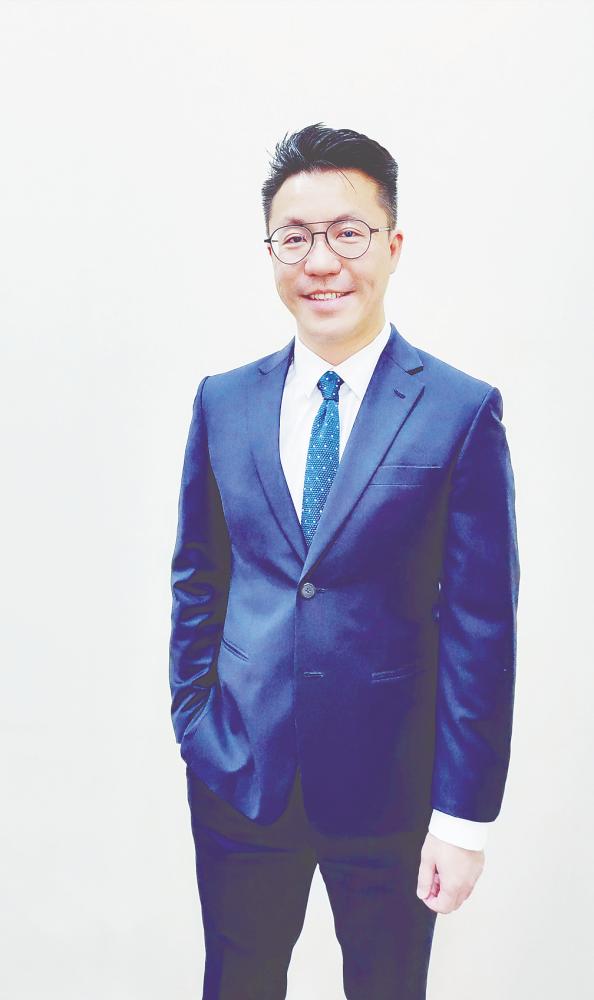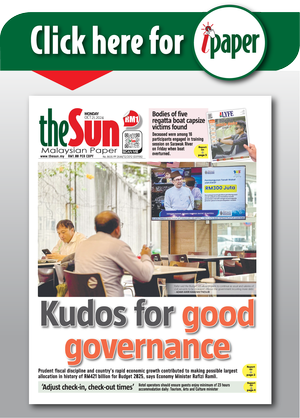What are the primary objectives of ENGIE’s partnership with UAC Bhd in advancing sustainability efforts, and how do these align with broader industry goals?
Wong: At ENGIE, we see ourselves not just as an energy provider but a catalyst for sustainable transformation in Malaysia’s manufacturing sector. Our conversation with UAC started way earlier in 2015 when they sought to reduce energy consumption and their carbon footprint. Since then, we have worked hand-in-hand with UAC, progressively expanding our collaboration to provide energy-efficient solutions, starting with an overhaul of UAC’s compressed air systems, which improved energy efficiency by 18% and reduced CO₂ emissions by approximately 520 tonnes annually – equivalent to planting nearly 8,500 trees.
Building on this success, we upgraded their steam plant by replacing outdated medium fuel oil (MFO) boilers with cleaner, more efficient natural gas boilers. Most recently, we helped UAC embrace green energy through the installation of a rooftop solar system. Collectively, these initiatives enable UAC to reduce over 13,000 tonnes of CO₂ annually, with minimal disruption to their operations.
These ongoing efforts reflects a long-term strategy to help UAC meet its sustainability goals while aligning with Malaysia’s sustainability goals, including reducing carbon emissions by 45% by 2030 and achieving 70% renewable energy share by 2050.
By delivering tangible financial and environmental results, ENGIE is helping UAC – and the wider manufacturing sector – take actionable steps toward energy resilience and decarbonisation.
What made the partnership between ENGIE and UAC work so effectively? Are there unique synergies or shared values that other industry collaborations could emulate?
Wong: The success of our partnership with UAC lies in the alignment of our shared values, vision, and commitment to sustainability.
As a global leader in the energy transition, ENGIE has consistently led efforts to accelerate the shift towards a low-carbon economy. This long-term vision aligns perfectly with UAC’s goal of reducing its environmental impact without compromising business performance.
Together, we’ve built a long-term partnership that goes beyond solving today’s energy challenges – our focus is on working hand-in-hand with UAC to continuously optimise their energy performance, driving lasting impact for both the company and the environment.
Malaysian industries are at a critical juncture, facing significant challenges in making the shift towards more sustainable operations, due to stringent government regulations, rising energy costs and heavy reliance on fossil fuels. These pressures create both challenges and opportunities. Our partnership with UAC serves as a proven example that tailored energy solutions, combined with effective long-term energy management, can drive both operational efficiency and environmental sustainability. It demonstrates how businesses can embrace sustainability without compromising on growth.
A key driver of this success has been our flagship Utilities-as-a-Service (UaaS) model. Through this innovative approach, we modernised the utilities infrastructure at UAC’s manufacturing plant in Ipoh, integrating advanced energy-efficient technologies and taking full responsibility for operating, maintaining, and optimising the energy systems. This allows UAC to focus on its core operations while ensuring continuous improvement in energy performance. This model proves that sustainability excellence and business growth can indeed coexist.
What challenges did you encounter during the transition and how did both parties address them to ensure project success?
Loon: Embracing sustainable operations may have posed some challenges, particularly the initial investment in advanced technologies and the necessity for specialised skills. However, we firmly believe sustainability is a critical strategic business decision, not simply an environmental choice. By prioritising sustainability at all levels of our organisation, we are confident that this transition will not only boost long-term operational efficiency but also lead to significant cost savings and enhanced competitiveness. This commitment is essential for our future success.
Partnering with ENGIE has been a transformative experience for us. Their zero-capex financing model enabled us to upgrade our plant without a significant initial investment. With ENGIE covering the upfront costs and ensuring energy savings, we have already begun to experience the benefits through reduced energy bills and more predictable expenses.
Furthermore, stricter regulations have created additional challenges, but we see this as an opportunity to position UAC for long-term success. By initiating discussions on energy efficiency early and leveraging ENGIE’s global expertise, we have set ourselves up for sustainable growth and compliance, establishing our position as leaders in the industry.
Wong: The transition to sustainable operations with UAC was an exciting opportunity, but like any complex project, it came with its set of challenges and considerations. Two key aspects that were particularly important to us were:
(i) Aligning expectations during the design phase.
It took time to fully understand UAC’s unique needs and goals. This wasn’t about providing a one-size-fits-all solution; it was about developing a tailored energy strategy that aligned with UAC’s operational objectives and long-term sustainability targets. We needed to understand the specifics of their plant operations, timelines, and key deliverables. Both our teams worked closely together to identify any potential differences, resolve them, and agree on a common set of processes and communication protocols. This collaborative approach in the early stages ensured a smooth transition and maintained momentum throughout the project.
(ii) Safety as a top priority.
At ENGIE, safety is never compromised, particularly during the implementation phase. Given the complexity of the project, we made safety a central focus from the outset. ENGIE appointed a site safety supervisor within the project management team to oversee safety and reduce dependency on contractors for managing environmental, health, and safety standards. This proactive approach ensured that our safety standards were consistently met and exceeded, allowing us to achieve zero loss-time incidents throughout the project, ensuring the safety of both our teams and UAC’s staff.
How is ENGIE leveraging its global expertise in energy solutions and technologies to enhance efficiency and sustainability within UAC Bhd’s operations?
Wong: Across Southeast Asia and beyond, ENGIE has enabled many industry players to adopt energy-efficient technologies and manage their energy performance, delivering measurable financial and environmental results. By combining our globally proven expertise with local implementation, we provide practical, low-risk pathways for companies like UAC to lead the charge in energy efficiency, decarbonisation, and the transition to green energy.
Through our flagship UaaS model, we finance, design, modernise, operate, and maintain UAC’s utility infrastructure in Ipoh. We began by revamping UAC’s compressed air systems and later modernising their steam plant, achieving significant energy savings while ensuring seamless site operations. Most recently, we enabled UAC to adopt rooftop solar installations, further reducing energy costs and their carbon footprint.
Most importantly, we help UAC to achieve these sustainability milestones with minimal to no impact on current operations and without upfront investment or risk.
Transitioning from MFO boilers to cleaner, more efficient natural gas boilers is a key aspect of this collaboration. Yin Kee, could you please share what quantifiable environmental and economic benefits have emerged, and how replicable is this approach for other industries?
Wong: Many manufacturers in Malaysia still rely heavily on fossil fuels like medium fuel oil and diesel for their operations. However, transitioning to cleaner energy sources is becoming increasingly essential due to stricter regulations by the Malaysian government as part of its drive for a sustainable energy landscape. Some obvious indications are the recent announcement on carbon tax in Budget 2025 and the upcoming Energy Efficiency and Conservation Act.
At UAC, our success in modernising their steam plant showcases what’s possible. We replaced their outdated MFO boilers with cleaner, highly efficient natural gas-fired boilers. Not only is natural gas cleaner – producing significantly lower emissions of CO₂ – it’s also more cost effective than MFO, leading to reduced fuel expenses. Additionally, we overhauled the entire steam infrastructure, including a new deaerator, ensuring optimal energy performance. This particular transition resulted in a reduction of 5,360 tonnes of CO₂ emissions annually.
But the success of this project extends beyond environmental impact. The comprehensive overhaul of UAC’s steam infrastructure ensures the system operates at peak efficiency. By transitioning from out-dated MFO boilers to cleaner, highly efficient natural gas-fired boilers, we not only reduced carbon emissions but also improved energy reliability.
This upgrade ensures UAC’s autoclaving process, a critical part of their operations, continues to receive consistent, high-quality steam, meeting the company’s evolving needs for both efficiency and sustainability.
The transition from MFO to natural gas is definitely a model that can be replicated across various industries. Central to this replicability is our flagship UaaS model, where we encourage industry players to partner with a reliable energy expert like ENGIE who can provide not only the advanced energy-efficient technology but also manages ongoing energy performance and system maintenance in the long term, while guarantees energy performance. This allows companies like UAC to focus on their core business – driving growth – while we manage the complexities of energy transformation.
From a leadership perspective, what insights can you share to guide other Malaysian companies on their ESG journeys?
Wong: Effective ESG transformation begins with leadership. It’s not about ticking compliance boxes; it’s about embedding sustainability into the core of business strategy and decision making. By making sustainability a central pillar of your operations, you’re investing in the future resilience of your business and securing long-term competitive advantage.
In many industries, there are still businesses that believe they can delay this transformation. But the reality is that waiting will cost them in the long run. Malaysia, for example, is on the fast track to achieving its net-zero targets, and businesses must prepare now.
Even if policies such as carbon taxes or regulatory documentation requirements are yet to apply to your industry, now is the time to act. I would recommend a few key principles:
One, take a holistic approach. ESG should be integrated into all aspects of a company’s operations, from energy procurement and supply chain management to customer engagement and reporting.
Two, develop a comprehensive decarbonisation roadmap. This allows businesses to set internal benchmarks and proactively prepare for future regulations.
Three, partner with a reliable energy expert. A good partner can ease the transition with a zero-capex model and proven expertise.
As policies tighten, early adopters won’t just comply – they’ll innovate, lead, and set new industry standards, just like UAC. ESG transformation is a shared responsibility, and the time to start is now.
Loon: The most important thing is to continue emphasising ESG culture. It’s crucial to foster a mindset that prioritises sustainability and ethics at all levels of the organisation. Then, implementing effective ESG strategies not only mitigates risks but also strengthens your company’s reputation, giving you a significant edge over competitors in the market.
What are your views on the government’s strong push for energy transition and initiatives? How do you see these shaping the industry’s sustainability landscape?
Wong: The government’s recent push for energy transition, especially in the last two to three years, reflects ambitious goals paired with more structured initiatives. The National Energy Transition Roadmap aims to accelerate Malaysia’s energy transition towards net zero emissions by 2050, signalling a clear commitment to this cause. Additionally, state authorities such as the Penang Green Council have launched the Penang Energy Framework in November 2024, showing that this commitment is not just national.
Overall, the government, together with the private sector and financial institutions, is creating a strong, supportive ecosystem to help Malaysia transition to a more sustainable future.
We’re excited to be part of this journey.









